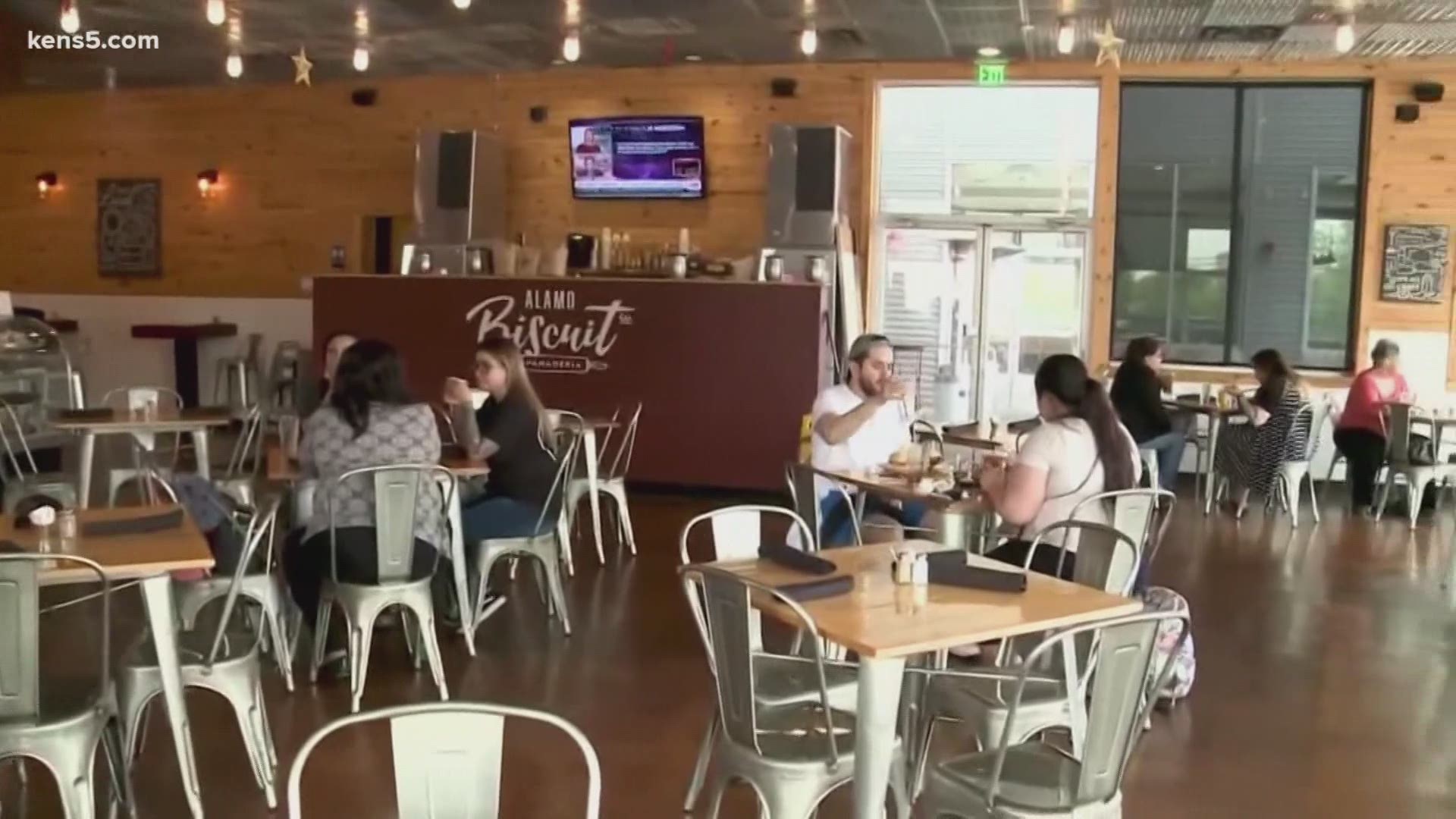SAN ANTONIO — New guidelines for restaurants in Texas are going to allow them to seat more customers, but some San Antonio restaurant owners still feel they have a rough road ahead.
“As we work to continue to contain COVID-19, we will also continue to work to open up Texas,” Governor Greg Abbott said Thursday, announcing the roll out of new guidelines for restaurants and other businesses.
The announcement eased restrictions on restaurants, allowing them to increase capacity to 75%. But Ceasar Zepeda, owner of Sangria On The Burg and partner at Alamo Biscuit Company, said local restaurants are not out of the woods yet.
“It does change, but it doesn’t change it drastically. The bigger a restaurant you are, the more of a change you’re gonna see,” he said.
For physically smaller restaurants like Sangria On The Burg, going from 50% to 75% amounts to one additional table they can open. It’s larger restaurants that have room to expand that are going to see a bigger difference from the change.
“But one table’s significant, you know?” Zepeda said. “One table amounts to about $90 thousand in sales a year. I’ll take that all day.”
Zepeda says even with that increase, operating at lowered capacity for so long, the increased costs of doing business and makes it hard to keep up with operating costs. Alamo Biscuit Company is slightly over a year old, and planning for startup costs is something every small business owner plans for. Planning for a pandemic is another matter.
“COVID… Oh man, you hope you have a great relationship with your landlords,” Zepeda said. “I don’t care how successful we look. I don’t care if we’re on the news, if we’re on food network, I don’t care where we are. We’re trying to make rent.”
The other challenge restaurants are facing is getting enough staff. He says that the cooks and chefs were making enough before the pandemic that to go back to work now, would mean taking a pay cut compared to unemployment.
“Every single restaurateur I know that’s doing well and that’s understood and pivoted, changed, adapted to the situation were going through staff problems,” Zepeda said. “We don’t want to underpay anybody, but we don’t want to underpay anybody, but we don’t have the sales to support paying them what they’re worth. I hate that position.”
Zepeda says the best way to help keep small local restaurants afloat is to order from them throughout the week, instead of just on weekends.
“Just spreading it out and making another night your night so that we can have sales on Monday-Tuesday-Wednesday-Thursday-Friday-Saturday. Every single day that we’re open, we can afford the labor that we have,” he said.
He also said its helpful dining in or ordering directly from a restaurant’s website. He said third party apps take a slice of a restaurant’s profits, which makes it all the harder to cover their costs.
“It’s great, but you’ve got to understand that we lose 20-30% on all those sales,” Zepeda said. “If they take 30%, there goes all our chance on profit.”

